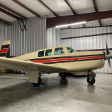Well that was "fun"
-
Members Online
- Meshach
- Pinecone
- 231DF
- Nico1
- bigmo
- Greg Ellis
- M20F
- AndreiC
- Ragsf15e
- Skyland
- Kerrville
- wombat
- toto
- Sue Bon
- CalebH
- eman1200
- Trogdor
- 201er
- A64Pilot
- GRM321
- CAV Ice
- WilliamR
- Htmlkid
- Philofficer
- Mathias
- Rsmithref
- Rmnpilot
- LANCECASPER
- OR75
- generalaviationguru
- Pasturepilot
- UteM20F
- hammdo
- pkellercfii
- midlifeflyer
- Mooneyintn
- turbofan
- prillayo03
- crustymuffin


Recommended Posts
Join the conversation
You can post now and register later. If you have an account, sign in now to post with your account.